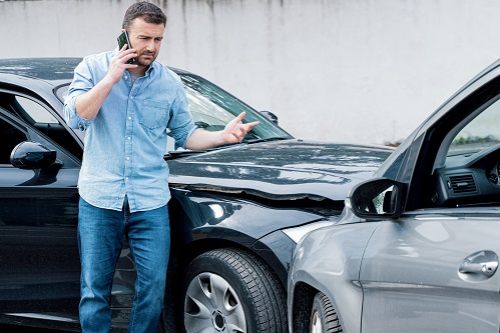- How much is gap insurance in Indiana?
- Cheapest gap insurance companies in Indiana
- Average gap insurance cost in Indiana by city
- How much is gap insurance in Indiana by age group?
- How does gap insurance work in Indiana?
- Where to buy gap insurance in Indiana
- Methodology
- Indiana gap insurance: FAQs
- Compare Indiana gap insurance rates with other states
How much is gap insurance in Indiana?
In Indiana, gap insurance costs an average of $1,973 per year, but prices vary by company. Your car's value also affects the cost of gap insurance. Expensive or luxury cars depreciate faster than standard vehicles, so gap coverage may have to pay more, leading to higher rates.
Cheapest gap insurance companies in Indiana
Travelers offers the cheapest gap insurance coverage in Indiana at $1,386 annually. Not all car insurance companies provide gap coverage, and rates differ widely by company.
See the table below to find the cheapest insurance companies for gap coverage in Indiana.
| Company | Auto insurance rates with gap premium | Gap premium |
|---|---|---|
| Travelers | $1,386 | $41 |
| Progressive | $1,618 | $54 |
| Nationwide | $1,756 | $59 |
| Farmers | $3,133 | $139 |
Average gap insurance cost in Indiana by city
Gary is the most expensive to buy gap insurance with an average rate of $2,899, and Granger is the cheapest with an average of $1,615. Where you live in Indiana can affect your insurance rates. Auto insurance rates are higher in cities with more crime and theft since your vehicle is more likely to be damaged or stolen.
This table shows the average gap insurance rates by city for Indiana.
| City | Auto insurance rates with gap premium | Gap premium |
|---|---|---|
| Granger | $1,615 | $56 |
| Fort Wayne | $1,631 | $59 |
| Bloomington | $1,682 | $63 |
| Griffin | $1,831 | $71 |
| Burns Harbor | $1,912 | $68 |
| Dyer | $1,929 | $70 |
| Munster | $1,961 | $71 |
| Lawrence | $1,987 | $70 |
| Indianapolis | $2,287 | $90 |
| Gary | $2,899 | $115 |
How much is gap insurance in Indiana by age group?
Car insurance rates for younger drivers are more expensive because they are more likely to engage in risky driving and lack the experience needed to avoid accidents. Rates go down as the driver gets older. For example, at 18 years old the average rate is $7,416 a year, and at 25 the average annual rate is $2,429.
The table below shows the average gap insurance rates in Indiana by age.
| Age group | Auto insurance rates with gap premium | Gap premium |
|---|---|---|
| Teen | $7,416 | $262 |
| Young adult | $2,429 | $91 |
| Adult | $1,973 | $73 |
| Senior | $1,729 | $59 |
How does gap insurance work in Indiana?
When you buy or lease a new car, depreciationDepreciation is the decrease in your car's value over time due to wear and tear, age and mileage. Depreciation is used to determine the actual cash value of a vehicle in the event of a total loss. can quickly cause you to owe more than the car is worth. If your car is totaled, the insurance company will only pay out the car's actual cash value, which may leave you owing on the loan. That's where gap insurance comes in. If your vehicle is totaled or stolen, gap insurance covers the difference between your car's value and the loan payoff.
"Gap is designed for people that take long-term loans and/or roll taxes, service plans, or warranties into their loan," said Zack Pope, agency manager at David Pope Insurance in Missouri. "Most gap coverages only go a certain percent over market value to pay off a loan for a totaled vehicle (typically 25%). It costs significantly less money to get gap through your insurance than to purchase it from the dealership."
For example, let's say you have a $40,000 car loan, but your vehicle's actual cash value is only $35,000. If the car is stolen, your insurance company will reimburse you $35,000, minus your deductibleThe deductible is the amount you pay out of pocket for a covered loss when you file a claim.. Gap insurance would cover the remaining $5,000 that you still owe on your loan. Without gap insurance, you'd be responsible for paying this difference out of pocket.
Once your loan is less than the value of your car, you can drop gap coverage. While you can always cancel gap insurance, you may be unable to add it anytime. Most insurers want you to add the coverage quickly after buying a car.
Additionally, many lenders require gap insurance when getting your loan. Although you can get gap coverage through your lender or car dealership, adding it to your current auto policy is usually cheaper.
Where to buy gap insurance in Indiana
Many insurance companies, including major providers, offer gap insurance in Indiana. You can add this coverage to your existing car insurance policy or buy a standalone policy.
The best way to get gap coverage is to add it to your auto insurance policy. Car dealers and lenders also offer gap insurance, but their policies are mostly expensive, making them less budget-friendly.
Methodology
We gathered car insurance rates with and without gap insurance through our data partner, Quadrant Information Services.
Averages are annual and based on our full coverage data set. This data set is based on:
- Bodily injury liability of $100,000 per person and $300,000 per incident
- Property damage liability of $100,000 per incident
- Comprehensive and collision deductibles of $500
- 40-year-old driver
- Honda Accord LX
- Good credit
- A clean driving record
- 12-mile commute, 10,000 annual mileage
To show the cost of gap insurance, we have compared rates with gap insurance added to the averages without gap insurance, and the difference is shown as the annual cost of gap insurance.
Rates are based on an analysis of over 5 million data points in all 50 states and Washington, D.C. from 138 companies.
Indiana gap insurance: FAQs
Is gap insurance required in Indiana?
Gap insurance isn't required by law in Indiana, but your lender may require you to have the coverage.
Who should buy gap insurance in Indiana?
You may need gap insurance if you have a car loan or lease in Indiana. Drivers who make a small down payment typically owe more than the vehicle is worth since cars depreciate faster than the loan is paid down, making gap insurance a good idea.
You don't need gap insurance if you own your vehicle or make a large down payment so that you owe less than the car's value from the start of your loan.
What is standalone gap insurance in Indiana?
Standalone gap insurance is a policy of its own, not connected with your car insurance. Gap insurance is available from your lender or a private company as a separate policy.
Does gap insurance cover leased cars in Indiana?
Indiana gap insurance covers leased cars where the driver owes more than the vehicle's current market value. Over time, you may remove gap coverage once your vehicle is worth more than what is owed.
Compare Indiana gap insurance rates with other states
 You might also be interested in
You might also be interested in- Indiana car insurance laws and requirements: What is changing in 2025
- Indiana OWI and insurance: How much does an OWI raise your insurance?
- Speeding ticket calculator in Indiana
- SR-22 insurance in Indiana
- Non-owner car insurance in Indiana: Best and cheapest companies
- Low-income car insurance in Indiana
- Indiana car insurance coverage calculator
- Indiana car insurance guide
- Cheapest car insurance for high-risk drivers in Indiana
- Cheapest home and auto insurance bundle in Indiana






